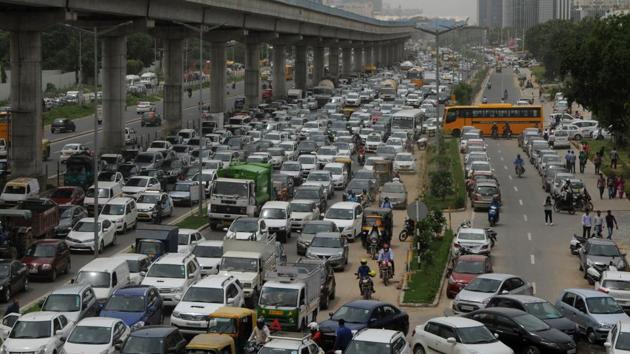Intelligent street design critical to independence of movement
There many examples in Gurugram where the agencies have spent crores on creating spaces for motor vehicles but not invested even paltry sums on creating facilities for pedestrians.
Last week, the country celebrated its 72nd Independence Day. But when are we going to achieve the independence of movement in our free country? Freedom of movement is described as the ability to travel however and whenever one wants. But, it has been seen that the mode (of travel) and time are the biggest deterrents which restrict movement in society. Let me explain how and why?

First, let’s look at the modes of transport. Ask anyone in Gurugram to attempt to walk on Golf Course Road and she will look at you twice before actually considering the suggestion. For people who are unaware, the glittering road is a fairly new project, which came up at a cost of near Rs 1,000 crore. It has 16 lanes for motor vehicles but not even 1.5 metres of space for pedestrians. So, for thousands of employees working in companies located along the road, feel discourage to walk due to faulty design. There are several other such examples in the Millennium City where the agencies have spent crores on creating spaces for motor vehicles but not invested even negligible amount on creating pedestrian facilities.
Now, let’s look at time factor. A common conversation in every household in this city is that they expect people to be back at home by 7pm, especially women and children, due to security issues. Unlit streets, high compound walls, lack of “eyes on street” and no designated walking spaces make the city highly unsafe. An evening stroll on any of the major or minor streets will reveal the potential security threat to the residents.
A major part of the problem of movement in our cities is because of unscientific street designs. Here are three main trends that explains the fault in street designing in our cities.
Designing for people, not vehicles
Most of the technical designs in India are based on a three-letter word called PCU which means Passenger Car Unit. The concept of PCU, originally derived from the West, was meant to rationalise various modes of transport into a single representative mode — which was a car in their concept. In the Indian context, it is a completely irrational approach on two counts. First, pedestrians are the majority of road users in most Indian cities. Therefore, why should they be represented by a car. Second, even if we take vehicles for as the unit of measurement, it should be two wheelers and not cars which are the predominant mode of vehicles on our roads. Therefore, the PCU based system on design may work for highways but not for city roads.
Neither capacity, nor understanding
When the head of public agencies makes comments against dedicating a metre of space for pedestrians on city roads, which have multiple lanes for cars, because it might cause more traffic jams, you get amused. One can forgive them because they are generalists and not technical experts, but the problem arises when you hear the same things from their engineering team. Now, this is mainly since most of the road engineering staff in municipal corporation and development authorities neither have capacity nor even basic understanding of urban street design. Most them by qualification have a Bachelor’s degree in civil engineering and some have a Master’s qualification, but it is either in traffic or highway engineering. Both of these don’t fit with the job requirement because one is a generic degree in civil engineering meaning more concrete, steel and bitumen while the other is all about making vehicles move fast, which is expected on highways and not urban roads.
No reference, no action
Seeing is believing and since there is no reference around what a modern urban street is, it becomes difficult for decision makers to bring about change. Therefore, Gurugram continues to spend crores on new flyovers because the agencies know how to construct flyovers and underpasses, but they are still clueless on how to create a good footpath because they have never done this in the past. Also, modern street design guidelines advocate things which are opposite to current way of working. For example, modern street design calls for multi-modal streets while our agencies want everything in PCU. Similarly, these designs suggest hawkers and vendors as part of streetscape for improving safety and security while we run drives to demolish them. Therefore, we don’t get what our public agencies don’t see.
Therefore, for independence of movement we need a revolution in street design. One way to start this revolution will be to create street designing teams in cities comprising of transport planners, urban designers, landscape professionals and just civil engineers.
Remember a lot of problems can be solved if we are able design things right, or else will have to wait for many more Independence Days before we could achieve freedom of movement.
(Amit Bhatt is the director, integrated transport, WRI India)






